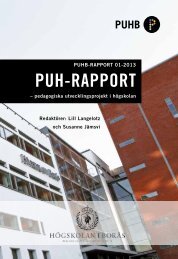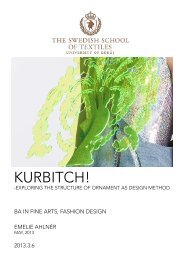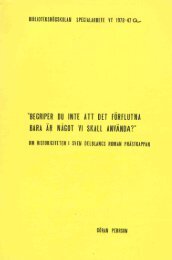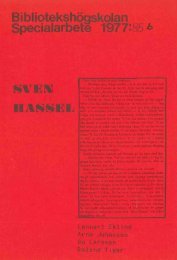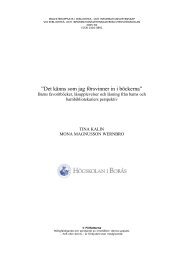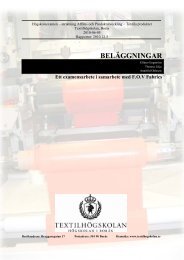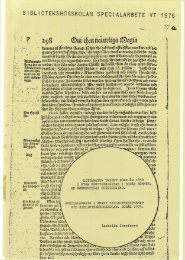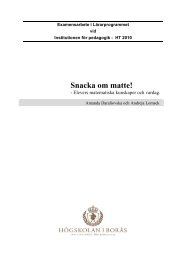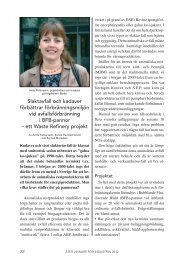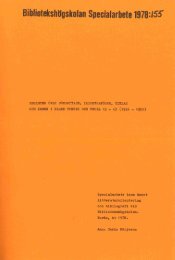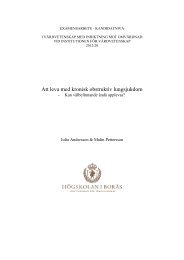barbara jansen - BADA
barbara jansen - BADA
barbara jansen - BADA
You also want an ePaper? Increase the reach of your titles
YUMPU automatically turns print PDFs into web optimized ePapers that Google loves.
mixing effect (Neumann 2012, Göbel, 2012, LBM, 2011).<br />
So far, several experiments have been conducted to enhance the quality of<br />
the colour mixing process. Different diffusor materials have been placed between<br />
the RGB-LEDs and the optical fibre ends. Prototype adapters have been<br />
built to increase the space between the LEDs and the fibre ends, enhancing<br />
the mixing of the light by bouncing it through an extended cylinder (adapter)<br />
between the LED and the fibre end. A combination of both techniques has<br />
also been explored<br />
The engineering department at the company GTE Industrieelektronik<br />
GmbH, under the leadship of Christian Specker accompanied by two physicists,<br />
has explored different solutions. One solution was to install a diffusor at<br />
the focal point of the silicon lens of the LED in order to enhance mixing of the<br />
coloured lights and also to collect the light afterwards via a converging lens<br />
to increase the luminous efficacy. Two major disadvantages was discovered<br />
with this method. Firstly, the added diffusor materials (increased interference)<br />
absorb too much of the needed light energy. The second disadvantage<br />
concerns the quality of the silicon lens, which is not manufactured in a high<br />
quality process. All commercial LED components have a high mechanical tolerance,<br />
which makes it impossible to add other precise optical equipment to<br />
them afterwards. Currently, Specker’s team has reached the conclusion that<br />
although this solution functions in a lab environment, i.e. in theory, it does<br />
not withstand technical issues relating to the conditions under which massproduction<br />
is carried out.<br />
A second idea is to adapt a single optical fibre to a single LED chip of acceptable<br />
quality which would be possible to manufacture commercially. If<br />
this idea were to be realized, one would be able to buy three single LED chips,<br />
red, green and blue. After connecting each of the three fibres to one of the<br />
three LED chips, the fibres would then be connected to a single fibre. When<br />
the three monochromatic light beams pass this gate, we would have three<br />
different colours of light mix in a single fibre. This would have to be done for<br />
each optical fibre in the textile (3-to-1). This technique is known and used<br />
mostly for laser equipment used in research and development. It has not yet<br />
been subject to mass-production with many fibres, partly because it would be<br />
too costly. Specker and his team recommend continuing to explore diffusing<br />
materials, although the reduction of light intensity likely is an unavoidable<br />
side effect. What also increases the level of difficulty is that I am looking for a<br />
small solution and one that is suitable for use with a textile structure. Finding<br />
47



